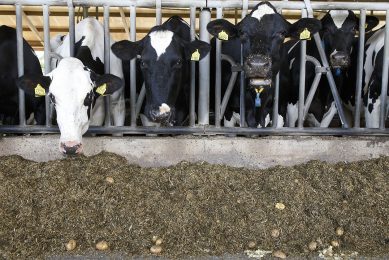Making feed pellets from oil palm frond
The Federal Land Development Authority (Felda) with the cooperation of the Malaysian Agricultural Research and Development Institute (MARDI) have successfully ventured into ruminant food production using oil palm fronds.
The venture in fact has resulted in the world’s first factory producing animal feed pellets using oil palm fronds. It is in operation for a year now.
The pellets, manufactured using technology from Japan and Germany, is enjoying good demand in the market and even livestock breeders from Canada and South Korea have shown interest in buying the product.
Jamil Md Yasin, the manager of the Kilang Oil Palm Frond (OPF), explained that the factory was erected on 1.5 hectares of land at a cost of RM14.1 million (€ 2.8m).
"The factory produces feed pellets for cows and goats and our aim is to emerge as the nation’s foremost animal feed supplier," he said in an interview with Bernama recently.
The factory produces two types of pellets, blended and the plain fronds. "The blended pellets are specially formulated to enhance the physiological and physical development of the animal. It is free from toxic substances, heavy metals and other harmful elements.
"The blended feed pellets are sold at RM30 for a 40 kg bag (€15/100kg), and the pellet made from 100 percent fresh palm frond is sold at RM17 for a 40kg bag (€8.60/100kg)," he said.
Breeders need not worry of the product expiry date because the pellets made from 100 percent fresh fronds can last up to two years but the blended pellets only lasts up to three months.
Nutritional value
In a study it was found that a beef cow consuming 7 kg pellets daily gained weight between 0.8 kg and 1kg per day while dairy cows daily fed 14kg of the feed could produce up to 21 litres of milk per day.
The study also noted that goats of the bore breed gained weight of more than 180 gram per day after being fed with the pellets.
Opportunity for local farmers
"This factory is capable of producing 1,200 tonnes of pellets per shift per month and the workers here work three shifts per day. At present there are 13 workers and mostly are children of the settlers," said Jamil.
The settlers can sell the palm oil frond to the factory for RM65 (€13.14) per tonne. There is no shortage of supply for the fronds as there are 17,000 hectares of palm oil plantation in the direct area and another 61,000 hectares of oil palm plantation a little bit further away.
Info: Oil palm frond











